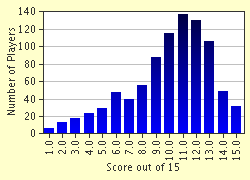Quiz Answer Key and Fun Facts
1. What age in Indian History is referred to as the 'Golden Age'?
2. What theory of ancient Indian history has recently been disproved?
3. What dynasty did the emperor Iltutmish belong to?
4. What ruler is referred to as the 'Mad Monarch'?
5. The Brihadeeswara temple at Tanjore was built by an emperor of what dynasty?
6. Which of these kings was among the first to use rockets in warfare?
7. The daughter of what general of Alexander's army married Chandragupta Maurya?
8. Who is generally regarded as the founder, in collaboration with the Japanese, of the 'Indian National Army', in the hope of expelling the British from India?
9. Who was the queen of Jhansi's trusted general during the 1857 mutiny?
10. During the reign of which emperor is the poet Kalidasa accepted to have lived?
11. Who was the first royal convert to Buddhism?
12. What empire did the emperor Krishnadeva Raya rule over?
13. What monk who lived around 800 AD proposed the philosophy of 'Advaita' (Non-duality)?
14. Who won the Nobel Prize for Literature in 1913?
15. Who founded Sikhism?
Source: Author
spb
This quiz was reviewed by FunTrivia editor
bloomsby before going online.
Any errors found in FunTrivia content are routinely corrected through our feedback system.
